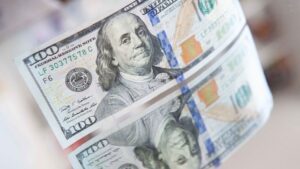
The U.S. dollar is actively declining against most world currencies on Monday morning as traders react to news about the bankruptcy of two U.S. banks.
The ICE-calculated index showing the U.S. dollar’s performance against six currencies (euro, Swiss franc, yen, Canadian dollar, pound sterling and Swedish krona) fell 0.7% during this morning’s session.
The euro/dollar pair is trading at $1.0720 as of 8:33 a.m. Q, versus $1.0642 at the close of last Friday’s session, with the euro adding about 0.73%.
The pound sterling is up 0.65% and is trading at $1.2114 versus $1.2034 at the close of last session.
The dollar-yen exchange rate is down 0.45% to trade at 134.40 yen.
As reported, the U.S. bank Silicon Valley Bank has come under the management of the Federal Deposit Insurance Corporation (FDIC). The FDIC will sell the assets of Silicon Valley Bank, which will allow payments on uninsured deposits. The bank’s bankruptcy was the largest since the 2008 financial crisis.
Regulators also shut down Signature Bank, a smaller New York bank that was popular with cryptocurrency holders.
Investors fear the problems at U.S. banks could spill over to the global financial industry, MarketWatch wrote. However, statements by regulators about their readiness to support the banking sector, including through the provision of concessional financing, have somewhat calmed market participants.
Also traders believe that against the background of problems in the financial sphere the Federal Reserve may soften its approach to the monetary policy, having made the decision to increase the key interest rate by 25 basic points at the March meeting instead of raising it by 50 bps.
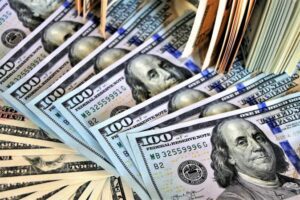
The US dollar is moderately declining against major world currencies on Thursday morning as investors are assessing U.S. economic data and its possible influence on the Federal Reserve’s (Fed) policy.
The index calculated by ICE, which shows the U.S. dollar dynamics against six currencies (euro, Swiss franc, yen, Canadian dollar, pound sterling and the Swedish krona), fell by 0.2% during morning trading. The day before the indicator reached its highest in five weeks.
The euro/dollar pair was trading at $1.0709 at 7:58 a.m. against $1.0688 at the close of Wednesday’s session, with the euro adding about 0.2%.
The day before, the U.S. Commerce Department reported that retail sales in the country rose 3% last month versus December, the fastest pace since March 2021.
Meanwhile, U.S. industrial production in January remained unchanged from the previous month, according to a Federal Reserve report released Wednesday. Experts’ consensus forecast called for an increase of 0.5%.
Recent statements from members of the Federal Reserve Board indicate that they generally support a further increase in the key interest rate to fight inflation. In particular, the head of the Federal Reserve Bank of Richmond, Thomas Barkin, and his colleague from the Federal Reserve Bank of Dallas, Laurie Logan, spoke about it.
Barkin said in an interview with Bloomberg that the Fed “needs to do more to fight inflation,” while Logan noted that the central bank “will have to raise the rate longer than previously expected.”
The pound sterling is up 0.1 percent, trading at $1.2049 versus $1.2032 at the close of last session.
The dollar-yen exchange rate is down 0.2% at 133.87 yen from 134.17 yen the day before.
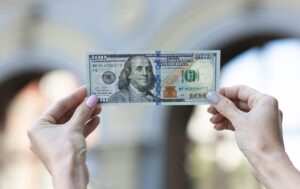
The U.S. dollar is moderately depreciating against major world currencies on Monday morning as investors continue to assess the dynamics of U.S. inflation and the future trajectory of the Federal Reserve’s monetary policy.
Meanwhile, trading volume in the foreign exchange market is lower than usual Monday as U.S. exchanges are closed in observance of Martin Luther King’s Day, Trading Economics noted.
The ICE-calculated index, which shows the U.S. dollar’s performance against six currencies (euro, Swiss franc, yen, Canadian dollar, pound sterling and Swedish krona), is down 0.23%, trading at its lowest in more than seven months.
Last week it was reported that consumer prices (CPI) in the U.S. rose 6.5% in December relative to the same month last year, slowing down from 7.1% in November. Inflation fell to its lowest level since October 2021.
A weakening inflationary pressure in the United States could be the decisive argument for a further slowdown in monetary policy tightening by the Federal Reserve.
The euro/dollar pair is trading at $1.0859 at 7:42 kk against $1.0833 at the close of last Friday’s session, the euro is adding more than 0.2%.
The dollar/yen exchange rate is down 0.1% at 127.71 yen from 127.86 yen at the end of last session.
The pound sterling is up 0.2% to trade at $1.2262 versus $1.2234 at the end of last week.
Meanwhile, the yuan, which is traded in mainland China, is at 6.7007/$1, up from 6.7030/$1 at the close of the previous session.
As it was reported the People’s Bank of China (NBK, the country’s central bank) on Monday injected 779 billion yuan ($116.2 billion) into the financial system within the framework of medium-term lending program (MLF).
Meanwhile, the rate on one-year loans under the MLF was kept at 2.75% per year, the NBK said in a statement. It remains unchanged for the fifth month in a row.
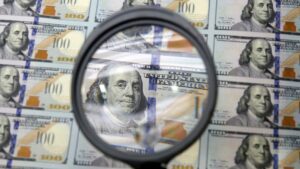
The US dollar is declining against other major currencies during Tuesday’s morning deals as investors’ risk appetite rebounds.
At the same time, the dollar continues to receive some support from expectations of further tightening of the monetary policy of the US Federal Reserve System (FRS) in the face of persistently high inflation, writes Trading Economics.
The ICE-calculated index showing the dynamics of the dollar against six currencies (the euro, the Swiss franc, the yen, the Canadian dollar, the pound sterling and the Swedish krona) is losing 0.13%, the broader WSJ Dollar Index – 0.22%.
The euro/dollar pair is trading at $0.9862 by 8:47 am CST, compared to $0.9844 at the close of the market on Monday. Euro rises in price by 0.18%.
The rate of the American currency against the yen is reduced by 0.13% and amounts to 148.84 yen against 149.04 yen following the results of the previous session.
The pound sterling rose to $1.1384 from $1.1359 in previous trading.
Britain’s new Chancellor of the Exchequer, Jeremy Hunt, has abandoned much of the fiscal stimulus proposed by former British Treasury Secretary Quasi Kwarteng on 23 September.
“The most important goal for our country now is stability,” Hunt said on Monday, speaking before Parliament.
Hunt’s proposals are expected to save the British authorities £32bn.
In particular, the government will return to plans to increase the corporate tax rate from 19% to 25% from April 2023, and also abandon plans to reduce the tax on dividends, carry out wage reform, freeze alcohol duties and introduce a zero VAT rate. for foreign buyers, writes the Financial Times newspaper. In addition, the lowering of the base income tax rate to 19% from 20%, which was planned for April, will be postponed.
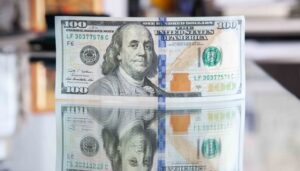
The US dollar is stable against major world currencies on Friday morning ahead of the publication of data on the US labor market.
The ICE-calculated index showing the dynamics of the US dollar against six currencies (the euro, the Swiss franc, the yen, the Canadian dollar, the pound sterling and the Swedish krona), as of 8:20 am CST, fell by 0.05%, the broader WSJ Dollar – by 0 .04%.
The euro/dollar pair is trading at $0.9799 compared to $0.9793 at the close of the session on Thursday, the euro adds about 0.06%.
The exchange rate of the US currency against the Japanese is 145 yen compared to 145.14 yen the day before. The so-called offshore yuan (traded in Hong Kong) dropped against the dollar to 7.1022 yuan per $1 from 7.0853/$1 the day before.
The pound rose 0.02% to $1.1164 compared to $1.1162 at the close of the previous session.
The market is waiting for the publication of data on unemployment in the US for September, which may indicate the “health” of the country’s labor market and determine the expectations of traders regarding the further trajectory of monetary policy.
Experts believe that the unemployment rate in the country in September remained at the August mark of 3.7%, and the number of new jobs increased by 250 thousand, writes Trading Economics. The report of the Ministry of Labor will be published at 15:30 CST.

The volume of foreign currency sales by the population of Ukraine in May exceeded the volume of its purchase by $262.2 million, which is higher than the April figure of $237.8 million, the National Bank of Ukraine reported.
According to the data on its website, “net” sales are still formed due to non-cash currency in the conditions of the almost complete ban on its purchase by the population introduced by the National Bank since the beginning of the war: in May, the volume of currency sales decreased to $244.1 million from $252.6 million in April and $375.3 million in March, while purchase volumes were $10.2 million compared to $8.6 million and $18.6 million, respectively.
In the cash market, the volume of transactions increased significantly due to the removal of the ceiling on the sale price of the currency by the National Bank. If in March-April banks sold to the population $72 million and $62.7 million, respectively, then in May – $216.9 million.
The volume of purchases of foreign currency from the population on the official market in May also increased – to $188.6 million from $68.8 million in April and $71.3 million in March.
At the same time, in general, in May, bank customers began to buy significantly more non-cash currency than to sell: “net” purchase amounted to $1,184 million compared to $421.2 million in April and $165 million in March.
In general, since the beginning of this year, the population has sold foreign currencies by $290.4 million more than they bought, while bank customers, on the contrary, bought it by $4.02 billion more than they sold.
According to the NBU data, the turnover on the official cash foreign exchange market tripled in May compared to March-April, but it is still 7 times lower than February, and 10 times lower than December.
The volume of sales of non-cash currency decreased by an average of half compared to pre-war levels, while the volume of purchases fell by almost two orders of magnitude.
NBU interventions in May rose to $3.4 billion from $2.2 billion in April, $1.78 billion in March, $0.31 billion in February and $1.31 billion in January.